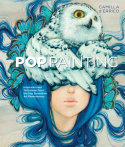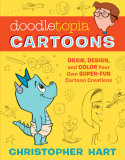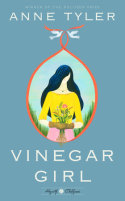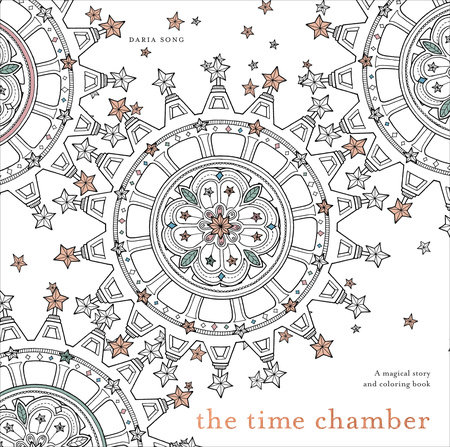I have been meaning to get around to this for weeks, but maybe it's good I haven't, because now I've had more time to use it.
This is the planner I have. I took the image off the website, afaithfulmom.com. It was given to me by a member of my church as a gift.
This is a targeted product. This planner is geared to married women with children, who belong to the Church of Jesus Christ of Latter-Day Saints (If you'd like to know more about the church, check out mormon.org. lds.org also has really great content, but is a little more geared toward people who are already familiar with the Church and its practices and beliefs.). I'll go a step further and say it's aimed at women who have children still at home.
Because I am all of those things, I fall pretty squarely in the demographic group this product was made for, so here's what I think:
First: I am reviewing this product, not the site or company, which I have about zero experience with. I have visited the website twice: once to price the planner ($36.99 + S&H), and once to get a copy of the planner image. At the website (again, afaithfulmom.com), you can see pictures of the inside of the planner, which I highly recommend doing. I am reviewing this planner because I love it. I am not being compensated in any way, and although I received the planner for free, it was a gift from a friend.
What's in the planner?
The first two thirds of the planner are pretty standard: a year at a glance calendar (there is a typo, in mine at least, it's only half the year + 2017 calendar). A monthly calendar, followed by a weekly calendar, with a couple of note pages for each month. What's to like? Each month is tabbed, and has it's own quote for the month. It's pretty, and it's easy to get to where you're looking for. Each week is covered in a two-page spread. Each day has a long column and a short column as well as a separately shaded area for "Keeping Track," that has two sections with just enough space for a short note. One feature is the checklist to the side of each week, for goals you don't assign a specific day. I like this; I feel that I have more freedom to work on them. The downside is that these are the goals I usually procrastinate to the next week - including this blog post. Three boxes cross the top of each week: one for notes, one unlabeled, one labeled "Next Week." Each day includes a S_P_E_ for checking off scriptures, prayer, and exercise.
How do I use it? I use the monthly spread for appointments like babysitting, outings, or doctor appointments. I also include big events like my brother's wedding (Yay, Bud!) On the weekly layout I use the "Keeping Track" section for things I want to see right away - some goal I shouldn't put off, someone's birthday... On each day I use the main section to write down appointment details, goals, activities, or notes I want to track. Once date-night is a fait accompli, I go back and add a note about what we did, and my favorite part. I use the short section for household chores or things like "move pizza dough to fridge to thaw." I use the next week box mostly for prep that needs to be done in advance, like "buy gift to arrive by next week." The S_P_E_ checklist I love in theory, but I have yet to use it even when I do them. I love this first planner section. Do I feel that its offerings significantly differ from many other planner options? No, not really. So why am I strongly recommending this planner? It's all (almost all) in the back third.
What's back there?
The first tab after December is Info. There's a page for emergency information I only picture myself needing if I lose my cellphone, or need to convey the information to another person, but it's probably good to have. The next page is for quick reference contacts. There's only room for twelve contacts, so choose wisely; I haven't dared put anything down yet, because the shortage of boxes. I would include two or three pages for this if it were up to me. Next up is the birthdays and anniversaries page. In this case, I like the one page format. One convenient location. There's also a page for a cards and invitations list. I imagine this is most helpful if you have a core group of people you invite to everything, which is probably what most of us do anyway. I wouldn't use it to make the guest list for a wedding (Yay, Bud!) unless you were trying to limit the guest list.
Next comes my favorite tab, Family. The first page page provides a space for Family Goals (Spiritual, Physical, Mental, Financial) and Family Highlights. The next page is called Staying Faithful, and there are six boxes: needs, wants, date nights, favorites, medications, sizes. At first, this page feels superfluous, because, don't we know these things about each other? But I really, really love it. Because you intentionally stop and think about these things. For wants I listed tablecloth, but my husband knows it's about wanting to make my surroundings beautiful and serene; he listed game shelves, but I know it's more about taking care of our things, and having the games accessible so we want to play them more. There are similar pages for each child (date nights becomes activities) and it's brought each child more into focus. It's made me more aware that my eldest needs a secret lair and inventing tools, that my youngest needs more one on one time, and that my middle child needs art. My husband and I joked that we need to have two more babies, because there are five pages, but I suspect this is ample for a lot of families these days, even if my mother would have had to do most of us two per sheet. Next are scripture reading charts, Old and New Testaments, and the Book of Mormon; just having the charts makes us better about doing the reading - of course it also helps that the theme for Primary this year is I Know the Scriptures Are True. The next page is for vacation plans - which I thrive on, so I feel happier just staring at the page. The next twelve pages are Family Night plans for each month. Each page has a space for family goals, a space for your monthly focus/theme, a calendar schedule for five weeks of FHE assignments, a box for things to incorporate, a space for reflections, and a quote. The theme space is kind of genius; we've never really thought about having a unifying theme for the month. Ours is: Kinder to Each Other. And each week we're focusing on how following a Proclamation principle can help us be kinder. We're not super good about family meetings either, so the family goals list is pretty helpful to us as well.
The next tab, Personal, is like a reprise of the family tab with the goal page and reading charts. It also has a page for People to Visit. I assume this is for visiting teaching. I like that it includes a Birthday space, and the Notes section I see being very helpful for important things like allergies. I have a phobia about accidentally killing someone because I fed them something they were allergic to. I was annoyed that there are only five pages for notes about church meetings, but then I decided that with three active children distracting me, I'll be lucky to fill that, so I'm good with that now.
The next tab is Home, and my favorite part of that is the monthly meal plans. It has helped with making my grocery list, knowing which days I'm ready to entertain, and staying in my budget. There is a page for tracking whether you're staying on budget, which is nice, but we personally track on an excel file. Next, a cleaning schedule. The helpful part is that it's divided into daily, weekly, monthly, quarterly, and annually. The next two pages are about emergency preparedness and more household management stuff; I'll be honest, I haven't done anything with this yet.
Next comes the Holiday tab. It makes me feel happy all over. I am one of those people that has to have things to look forward to to cope with daily life, and here we have planning pages for Valentines Day, Independence Day, Easter Sunday, Halloween, Thanksgiving, and Christmas.
The planner ends with a year at a glance calendar for 2017. Almost. There's a little pocket in the back that I use for my grocery lists and papers I need to take to church.
The planner looks beautiful and feminine, and it consolidates the things that are the most important to me to track right now. It fits my needs really well. My bipolar disorder has made me more disordered than usual lately (Yay for being back on meds now!), and the planner has helped bring a measure of order to that chaos, so I'm not just happy with it, I'm grateful.
Let's talk about the price. $36.99+S&H. I am glad I got this planner for free. I would not have bought it on my own - even if I had known it existed. But now that I have used it, and seen what a helpful tool it is for me, I'm already planning to find a spot in my budget for next year's edition. Another planner company I priced runs about $43ish for their most comparable product, so I don't feel like the price is a problem...mostly. It could help more people if the price were lower. That's about how I see it. Over all, I am super happy with the planner.




